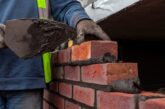
Richard Kershaw, UK Technical Manager, Cemex, outlines all you need to know about lower carbon concrete and cement
The latest changes to the British standard for concrete, BS 8500, (introduced in November 2023) have been hailed as a substantial “leap forward” for the industry. And whilst there has been a lot of industry talk around the long-awaited introduction of the new standard – what does it mean to the builder and what do you really need to know?
In a nutshell, the new standard BS 8500 now enables British concrete and cement producers to supply lower-carbon options, broadening the array of available lower-carbon concrete mixes – and opening up the market for more lower-carbon products to enter.

What’s new in the mix
During the manufacturing process, cement production emits carbon dioxide through the fuel to heat the raw materials, and process emissions from calcining the calcium carbonate. The largest proportion of embodied carbon in concrete is attributable to the cement. The new update to BS 8500 provides options to reduce the mass of clinker and reduce the embodied carbon of concrete. In simple terms, BS 8500 will now allow the specification of combination/ ternary cements. In technical speak, this means that CEMII/A-L and GGBS can be combined in a wider range of exposure classes.
Across industry, extensive testing has been carried out on these new multi-component cements, which has led to the update and the more widespread roll out of lower carbon concretes. Now with the potential to use these new cementitious products across all mainstream applications, the associated carbon saving could add up to an annual saving of 1 million tonnes of carbon dioxide.
Vertua – industry-first net-zero concrete
Cemex is proud to manufacture a wide range of high-quality British cements using locally quarried materials and additives. We supply cement and fly ash in bulk tankers by road, rail and sea to customers throughout the UK for ready-mix concrete and precast concrete products. We also offer a wide range of bagged cement and cementitious products which are distributed to builders through a national network of builders’ merchant partners.

In 2020 we launched Vertua, our first-ever net-zero CO2 concrete, which is now part of an extensive family of products that includes lower carbon cements, concrete, as well as aggregates, admixtures and mortar products. Cemex continues to pioneer in this field with a pipeline of new, updated and re-categorised products joining the Vertua range.
Vertua Lower Carbon is our wide range of lower carbon concretes, with bespoke designs enabling embodied carbon reductions greater 70% versus standard concrete (CEM I). The range can also provide additional benefits including increased durability, reduced heat of hydration and aesthetic finishes.
The Vertua brand covers five sustainability attributes: lower carbon emissions, increasing energy efficiency, saving water, incorporating recycled materials and optimising design. Any products that bear the Vertua brand must meet requirements for at least one of these sustainable attributes, with the benefits clearly and transparently presented for customers on a fact label.
Our Rugby Premium Cement now carries the Vertua Label to reflect its status as a lower carbon product, and comes in 30% recycled waterproof packaging.
Providing a new generation of products for tomorrow’s building industry has to start today – and making this happen is a really important part of the UK concrete and cement industry’s roadmap to net zero. Now is a good time to start looking at what is available – and to think about making some lower carbon introductions on your next project.
For more information on the Cemex range of lower carbon concrete and cement visit Cemex UK – Leading supplier of cement & concrete products | CEMEX UK.







